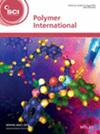Yub Narayan Thapa, Bimal Rajchal, Deepshikha Karki, Sonam Tamang, Ulrike Staudinger, Bhim Prasad Kafle, Rameshwar Adhikari
求助PDF
{"title":"Conjugated polymer-reinforced cellulosic frameworks: a promising approach for flexible electronics","authors":"Yub Narayan Thapa, Bimal Rajchal, Deepshikha Karki, Sonam Tamang, Ulrike Staudinger, Bhim Prasad Kafle, Rameshwar Adhikari","doi":"10.1002/pi.6749","DOIUrl":null,"url":null,"abstract":"<p>Flexible electronics are seamlessly integrated into our lives, from foldable displays to smart wearables, redefining our interaction with technology. The use of metals and semiconductors in these flexible devices is limited due to their poor bendability and stretchability. Consequently, integrating conjugated polymers (CPs) into a cellulosic framework has emerged as a promising approach for advancing flexible electronics. Cellulose, as an abundant and sustainable biopolymer, offers a compelling solution to the escalating global e-waste crisis by providing a cost-effective and biodegradable substrate. This synergy has the potential to address environmental concerns and unlock new avenues of flexible, eco-friendly and sustainable electronic devices. Herein the unique properties and synthesis routes of CPs are briefly introduced including their opportunities and challenges. The review discusses a facile and efficient approach to circumvent the challenges of CPs using cellulose as a substrate. The review explores fabrication approaches of CP–cellulose composites aimed at enhancing mechanical, electrical and optical properties. Through a critical examination of recent studies and advancements, it highlights how CPs reinforce the cellulose framework and investigates their structure–property relationships, which are crucial for tailoring the properties for desired applications. Finally, the review presents an outlook on potential challenges and prospects for advancing CP-based cellulose composites in flexible electronics. © 2025 Society of Chemical Industry.</p>","PeriodicalId":20404,"journal":{"name":"Polymer International","volume":"74 7","pages":"560-574"},"PeriodicalIF":3.6000,"publicationDate":"2025-02-05","publicationTypes":"Journal Article","fieldsOfStudy":null,"isOpenAccess":false,"openAccessPdf":"","citationCount":"0","resultStr":null,"platform":"Semanticscholar","paperid":null,"PeriodicalName":"Polymer International","FirstCategoryId":"92","ListUrlMain":"https://scijournals.onlinelibrary.wiley.com/doi/10.1002/pi.6749","RegionNum":4,"RegionCategory":"化学","ArticlePicture":[],"TitleCN":null,"AbstractTextCN":null,"PMCID":null,"EPubDate":"","PubModel":"","JCR":"Q2","JCRName":"POLYMER SCIENCE","Score":null,"Total":0}
引用次数: 0
引用
批量引用
Abstract
Flexible electronics are seamlessly integrated into our lives, from foldable displays to smart wearables, redefining our interaction with technology. The use of metals and semiconductors in these flexible devices is limited due to their poor bendability and stretchability. Consequently, integrating conjugated polymers (CPs) into a cellulosic framework has emerged as a promising approach for advancing flexible electronics. Cellulose, as an abundant and sustainable biopolymer, offers a compelling solution to the escalating global e-waste crisis by providing a cost-effective and biodegradable substrate. This synergy has the potential to address environmental concerns and unlock new avenues of flexible, eco-friendly and sustainable electronic devices. Herein the unique properties and synthesis routes of CPs are briefly introduced including their opportunities and challenges. The review discusses a facile and efficient approach to circumvent the challenges of CPs using cellulose as a substrate. The review explores fabrication approaches of CP–cellulose composites aimed at enhancing mechanical, electrical and optical properties. Through a critical examination of recent studies and advancements, it highlights how CPs reinforce the cellulose framework and investigates their structure–property relationships, which are crucial for tailoring the properties for desired applications. Finally, the review presents an outlook on potential challenges and prospects for advancing CP-based cellulose composites in flexible electronics. © 2025 Society of Chemical Industry.
共轭聚合物增强纤维素框架:柔性电子的一种有前途的方法
从可折叠显示器到智能可穿戴设备,柔性电子产品无缝地融入了我们的生活,重新定义了我们与技术的互动。金属和半导体在这些柔性器件中的使用受到限制,因为它们的可弯曲性和可拉伸性很差。因此,将共轭聚合物(CPs)集成到纤维素框架中已成为推进柔性电子的一种有前途的方法。纤维素作为一种丰富的、可持续的生物聚合物,通过提供一种具有成本效益和可生物降解的基质,为不断升级的全球电子垃圾危机提供了令人信服的解决方案。这种协同作用有可能解决环境问题,并开辟灵活、环保和可持续的电子设备的新途径。本文简要介绍了CPs的独特性质和合成路线,以及它们面临的机遇和挑战。本文讨论了一种简单有效的方法来规避使用纤维素作为底物的CPs的挑战。综述了cp -纤维素复合材料的制备方法,旨在提高其机械、电学和光学性能。通过对最近研究和进展的批判性检查,它强调了CPs如何加强纤维素框架,并研究了它们的结构-性能关系,这对于定制所需应用的性能至关重要。最后,展望了cp基纤维素复合材料在柔性电子领域的潜在挑战和发展前景。©2025化学工业协会。
本文章由计算机程序翻译,如有差异,请以英文原文为准。



 求助内容:
求助内容: 应助结果提醒方式:
应助结果提醒方式:


